Erotic ukiyoe art
 Full-colour printing, or nishiki-e , developed around , but many shunga prints predate this. For these reasons the fetish of the courtesan appealed to many. Zhou Fang , a great Tang-dynasty Chinese erotic painter, is also thought to have been influential. One piece shows a powerful women is seen experiencing a "happy ending" while another spotlights a duo of extravagantly clothed lovers attempting to feverishly circumnavigate their never-ending costumes. Like shunga, hentai is sexually explicit in its imagery. Hanging scrolls, ink and colour on paper. Production[ edit ] A man with a Western-style haircut makes love to a woman in traditional Japanese dress in this Meiji period Shunga print Shunga were produced between the sixteenth century and the nineteenth century by ukiyo-e artists, since they sold more easily and at a higher price than their ordinary work.
Full-colour printing, or nishiki-e , developed around , but many shunga prints predate this. For these reasons the fetish of the courtesan appealed to many. Zhou Fang , a great Tang-dynasty Chinese erotic painter, is also thought to have been influential. One piece shows a powerful women is seen experiencing a "happy ending" while another spotlights a duo of extravagantly clothed lovers attempting to feverishly circumnavigate their never-ending costumes. Like shunga, hentai is sexually explicit in its imagery. Hanging scrolls, ink and colour on paper. Production[ edit ] A man with a Western-style haircut makes love to a woman in traditional Japanese dress in this Meiji period Shunga print Shunga were produced between the sixteenth century and the nineteenth century by ukiyo-e artists, since they sold more easily and at a higher price than their ordinary work.
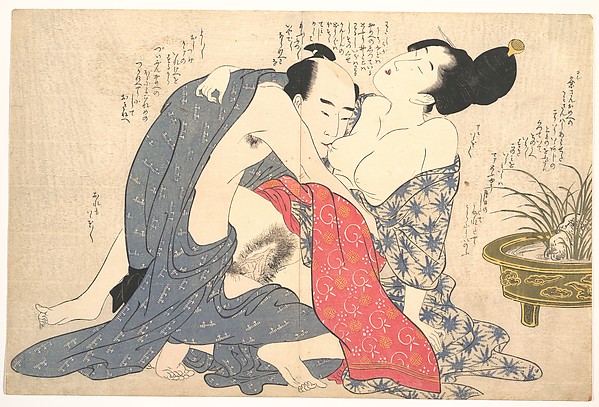

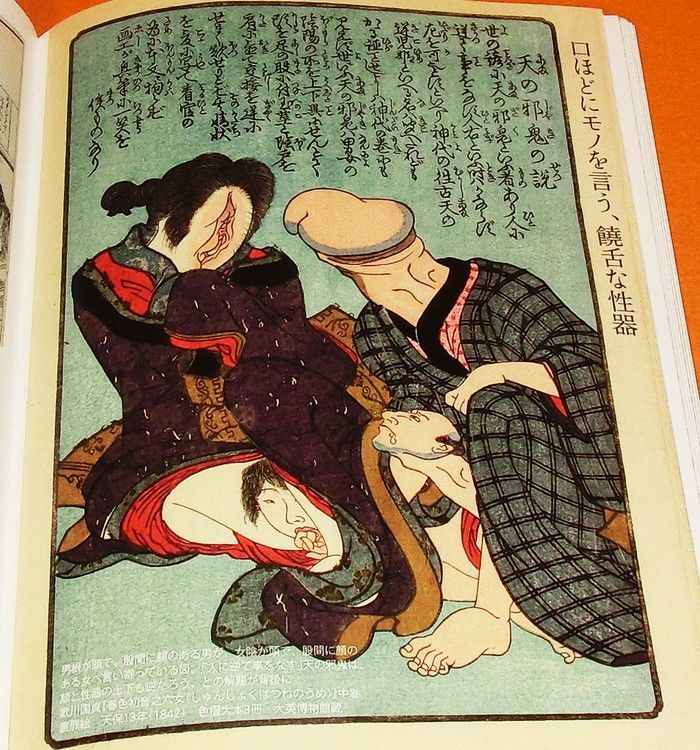
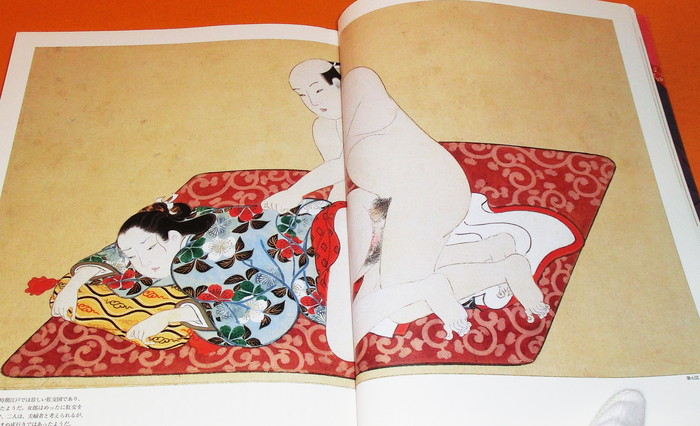
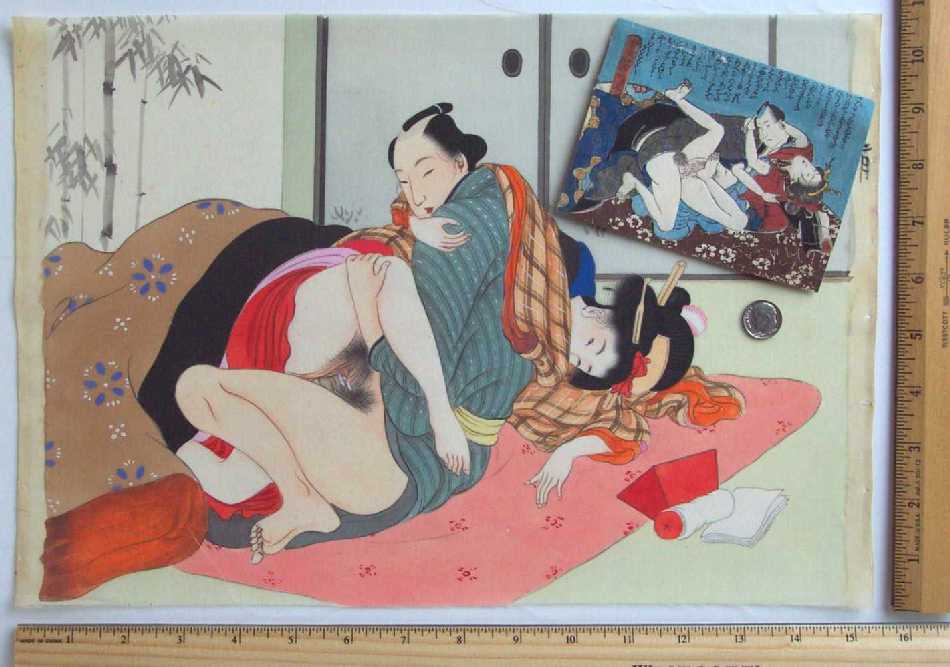

 Some writers on the subject refer to this as the creation of a world parallel to contemporary urban life, but idealised, eroticised and fantastical. Thanks to woodblock printing techniques, the quantity and quality increased dramatically. In he revisited the museum, which had an exhibition entirely of shunga "proudly displayed". Production[ edit ] A man with a Western-style haircut makes love to a woman in traditional Japanese dress in this Meiji period Shunga print Shunga were produced between the sixteenth century and the nineteenth century by ukiyo-e artists, since they sold more easily and at a higher price than their ordinary work. Some were highly elaborate, commissioned by wealthy merchants and daimyo, while some were limited in colour, widely available, and cheap. This led to the appearance of shunga by first-rate artists, such as the ukiyo-e painter perhaps best known in the Western world, Hokusai see The Dream of the Fisherman's Wife.
Some writers on the subject refer to this as the creation of a world parallel to contemporary urban life, but idealised, eroticised and fantastical. Thanks to woodblock printing techniques, the quantity and quality increased dramatically. In he revisited the museum, which had an exhibition entirely of shunga "proudly displayed". Production[ edit ] A man with a Western-style haircut makes love to a woman in traditional Japanese dress in this Meiji period Shunga print Shunga were produced between the sixteenth century and the nineteenth century by ukiyo-e artists, since they sold more easily and at a higher price than their ordinary work. Some were highly elaborate, commissioned by wealthy merchants and daimyo, while some were limited in colour, widely available, and cheap. This led to the appearance of shunga by first-rate artists, such as the ukiyo-e painter perhaps best known in the Western world, Hokusai see The Dream of the Fisherman's Wife.
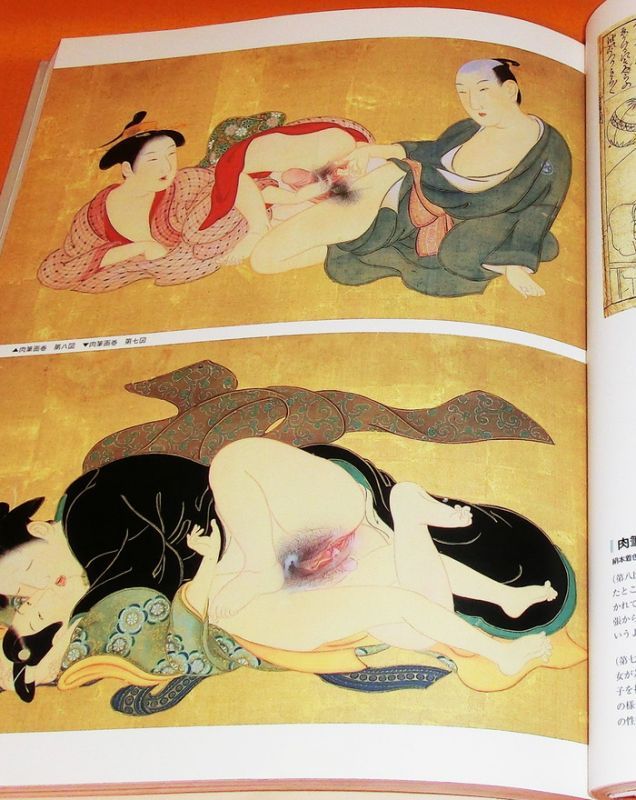


Elena. Age: 28. I am an independent escort lady, located in prague and available worldwide. I'm a young, good-looking woman, i can be romantic and passionate. My statue is very feminine, with large breasts and tushy.
Ukiyo-e Shunga Gallery | Japanese Art Showcase
However, since for several decades following this edict, publishing guilds saw fit to send their members repeated reminders not to sell erotica , it seems probable that production and sales continued to flourish. They are often shown with samurai. These carried the same fetish of the sex worker, with the added quality of them often being quite young. These customarily contained twelve images, a tradition with its roots in Chinese shunkyu higa. Edo period shunga sought to express a varied world of contemporary sexual possibilities.


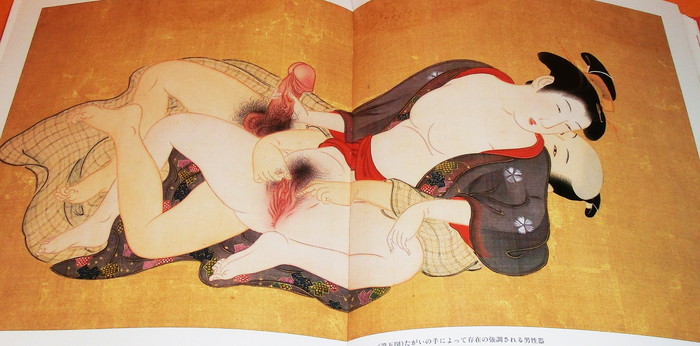




Description: Superstitions and customs surrounding shunga suggest as much; in the same way that it was considered a lucky charm against death for a samurai to carry shunga, it was considered a protection against fire in merchant warehouses and the home. In some cases this was to keep the cost low, but in many cases this was a matter of taste. They are often shown with samurai. Shunga prints were produced and sold either as single sheets or—more frequently—in book form, called enpon. History[ edit ] Shigenobu - Man and woman making love by Yanagawa Shigenobu Shunga was heavily influenced by illustrations in Chinese medicine manuals beginning in the Muromachi era to
Views: 1743
Date: 06.11.2017
Favorited: 5








.gif)


























User Comments
Post a comment
Comment: